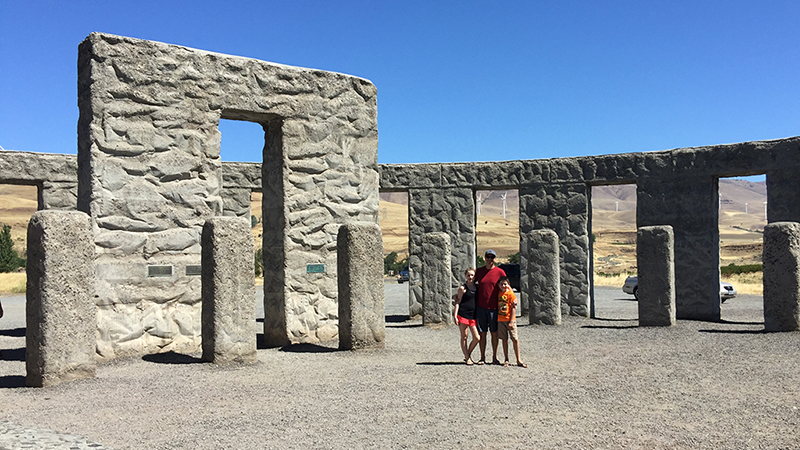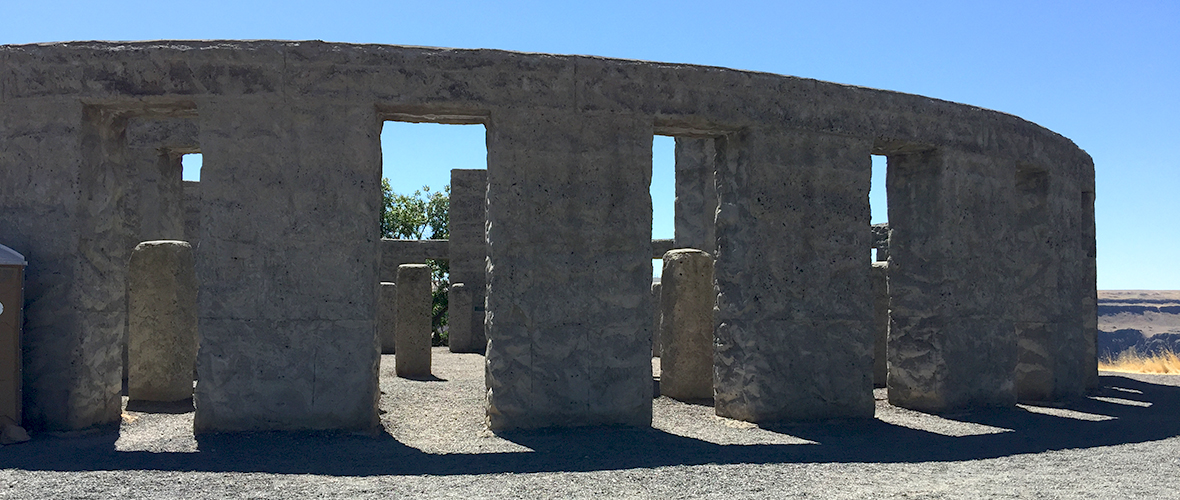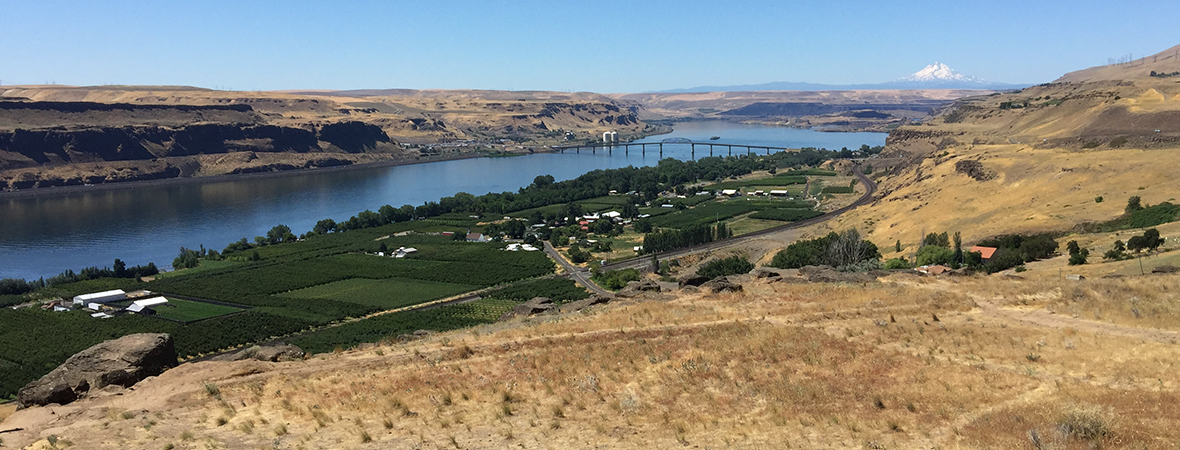
On our road trip from Portland, Oregon to The Gorge Amphitheater, just after we crossed the Columbia River, I saw what looked like Stonehenge sitting all alone on top of a hill, overlooking the river below. It was weird and amazing all at the same time. I begged Brian to pull off the Highway so we could check it out, but he was anxious to get to The Oasis Campground, as we weren’t entirely sure what to expect. While we had to skip it on the drive in, Brian promised that we’d make time to stop and check out the stone structure on our drive home.
Exhausted from our weekend of concerting, doughnut eating, and hiking in the Columbia River Gorge, we packed our things back in the truck Sunday morning for our 15 hour drive back home to Rocklin, California — and of course I reminded Brian to stop at the giant, life-size Stonehenge replica!

Maryhill Stonehenge Construction
Positioned high above the rushing Columbia River, The Maryhill Stonehenge is a replica of the original Stonehenge in England. The concrete landmark was commissioned in the early twentieth century by Samuel Hill, a wealthy railroad and utilities magnate who was also an early crusader for modern roads.
Samuel Hill was a Quaker who, in 1908, bought 7,000 acres of empty land along the Columbia River. He founded a town named Maryhill and tried to get other Quaker farmers to move to his settlement, but none came and a few years later the town burned down in a fire.
In 1918, Hill surveyed what was left of Maryhill, chose the most dramatic spot, and leveled an Inn that was built there to make room for something new and wondrous. The land was dedicated on July 4, 1918 as a memorial to those who had died in World War I and construction began on the full-size, astronomically-aligned replica of Stonehenge.
Guided by leading authorities on archaeology, astronomy, and engineering, Hill combined their knowledge to duplicate, as nearly as possible, the original size and design of the ancient Neolithic ruin in England. The original idea was to use local stone, however, when the rock proved unsatisfactory, Hill decided to use uniform slabs of reinforced concrete with an artificial lumpy exterior, created by lining the wooden forms with crumpled tin, that were mortared into megaliths.
The Washington Stonehenge War Memorial was completed in 1929 and re-dedicated on Memorial Day of that year, when 14 local service men were honored by having their names placed on the pillars of the Memorial.

Stonehenge War Memorial In Maryhill, Washington
The Maryhill Stonehenge was the first monument in the United States to honor the dead of World War I, more specifically, the soldiers from Klickitat County, Washington who had died in the then still on-going war. Today the Stonehenge War Memorial is part of the Maryhill Museum Of Art, which also includes monuments to the soldiers of Klickitat County who died in World War II, Korea, and Vietnam.
On July 4, 1918 the Washington Stonehenge altar stone was dedicated with a plaque that reads:
In memory of the soldiers of Klickitat County who gave their lives in defense of their country. This monument is erected in the hope that others inspired by the example of their valor and their heroism may share in that love of liberty and burn with that fire of patriotism which death can alone quench.

The Stonehenge Legend
Samuel Hill erroneously believed that the original Stonehenge in England had been used as a sacrificial site. Concluding there was a parallel between the loss of life in WWI and the sacrifices at ancient Stonehenge, he set out to build a replica on the cliffs overlooking the Columbia River as a reminder of those sacrifices and the “incredible folly” of the war.
When Samuel Hill died in 1931, his body was cremated and the ashes placed in a crypt just below the Stonehenge Memorial. The original crypt deteriorated and was replaced in 1955 by a granite monument bearing his epitaph: Samuel Hill: Amid nature’s great unrest, he sought rest.
While Hill may not have accurately understood and interpreted Stonehenge’s original purpose, he did succeed in creating a fascinating, jaw-dropping World War I memorial that despite its remote location, remains a highly trafficked tourist stop. The location provides visitors with stunning, panoramic views of the Columbia River, and beside the river, in a small area of green, sits what remains of the small town of Maryhill, Washington.
Know Before You Go
- The Maryhill Stonehenge War Memorial lies at the original Maryhill town site, three miles east of the Maryhill Museum just off Highway 14.
- It is part of the Maryhill Museum Of Art located at 35 Maryhill Museum Drive, Goldendale, Washington 98620 in Klickitat County.
- Both Stonehenge Memorial and the Klickitat County Veterans’ Memorial are open daily 7 a.m. to dusk. Admission is free to visit the memorial; but donations for its continued maintenance are appreciated.
- Samuel Hill’s crypt, now a granite monument, is located a short walk southwest of the Stonehenge Memorial on a bluff overlooking the river.
- You’ll spend about 20-30 minutes here, depending on whether you walk out to Sam Hill’s monument. The only restrooms are port-a-potties.







